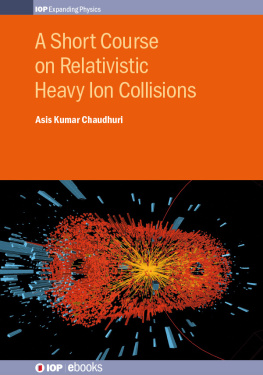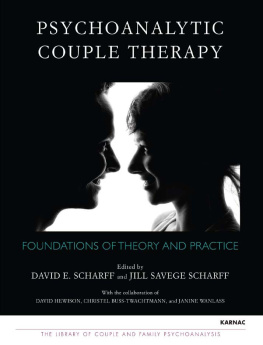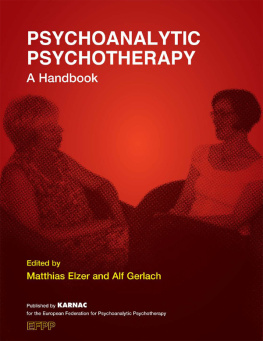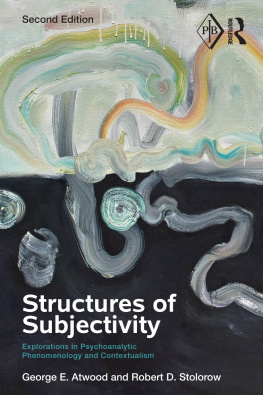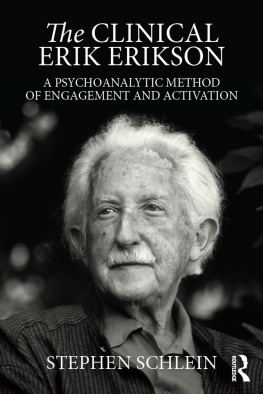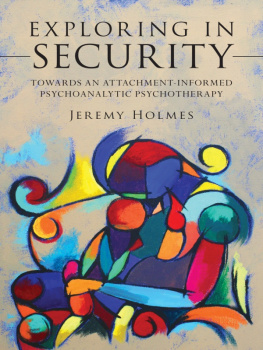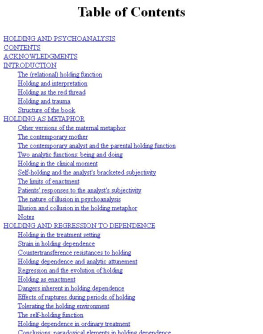Second edition published 2014
by Routledge
27 Church Road, Hove, East Sussex BN3 2FA
and by Routledge
711 Third Avenue, New York, NY 10017
Routledge is an imprint of the Taylor & Francis Group, an informa business
2014 Joyce Slochower
The right of Joyce Slochower to be identified as author of this work has been asserted by her in accordance with sections 77 and 78 of the Copyright, Designs and Patents Act 1988.
All rights reserved. No part of this book may be reprinted or reproduced or utilised in any form or by any electronic, mechanical, or other means, now known or hereafter invented, including photocopying and recording, or in any information storage or retrieval system, without permission in writing from the publishers.
Trademark notice: Product or corporate names may be trademarks or registered trademarks, and are used only for identification and explanation without intent to infringe.
First edition published by The Analytic Press, Inc. 2006
British Library Cataloguing in Publication Data
A catalogue record for this book is available from the British Library
Library of Congress Cataloging in Publication Data
Slochower, Joyce Anne, 1950
Psychoanalytic collisions / Joyce A. Slochower.Second edition.
pages cm
ISBN 978-0-415-81338-9 (hbk)ISBN 978-0-415-81339-6 (pbk)
ISBN 978-1-315-81936-5 (ebk) 1. Psychoanalysis.
2. Psychotherapist and patient. 3. Psychoanalytic counseling.
4. Hope. I. Title.
RC509.S556 2014
616.8917dc23
2013030564
ISBN: 978-0-415-81338-9 (hbk)
ISBN: 978-0-415-81339-6 (pbk)
ISBN: 978-1-315-81936-5 (ebk)
Typeset in Times
by Florence Production Ltd, Stoodleigh, Devon, UK
Contents
Psychoanalytic Collisions explores moments of joint impact and disruptive collision as Ive experienced them insideand outsidethe consulting room. Its about inspiration and failure, and in this sense, its about my patients. Their determination to change, their deep commitment to the work, and our mutual engagement have helped me thinkand think againabout therapeutic experience and its impact on both of us. I hope Ive done justice to the depth of their contributions.
Being a supervisor is a privilege, an opportunity to learn and teach simultaneously. My supervisees have enriched and complicated my understanding of professional collisions. Im grateful to them for their honesty, thoughtfulness, and wisdom.
My connection with The Analytic Press dates back over a decade, when Steve Mitchell acted as my editor for Holding and Psychoanalysis . After the loss of that collaborative and generative relationship, I couldnt imagine that Id find another editor who would enthusiastically enter into dialogue with me, but Paul Stepansky did just that. His highly intelligent, close reading of this manuscript was both clarifying and challenging. It has been a pleasure to work with him.
Its part of my writing process to seek out theoretical conversation and critical feedback as my ideas develop. Im blessed to have so many friends and colleagues who generously read and responded to the first edition of this manuscript as it took shape. Im especially indebted to Sue Grand and Ruth Gruenthal, my trusted first eyes. Over the years, so many other colleagues and friends have engaged with my writing, offering inputdirect and implicitthat found its way into Collisions . Im grateful to Jim Anderson, Lew Aron, Tony Bass, Donna Bassin, Jessica Benjamin, Ghislaine Boulanger, Jeanne Wolff Bernstein, Margaret Crastnopol, Andy Druck, Larry Epstein, Glen Gabbard, Stefanie Glennon, Adrienne Harris, Margery Kalb, Susan Kraemer, Stuart and Barbara Pizer, Nancy Seif, Mal Slavin, my dear friend Ruth Stein, now tragically gone, and Donnel Stern. They have shared their minds, their friendship, and in many cases, also their love. A special thanks to my musicologist son, Jesse Rodin, for bringing his extraordinary academic and literate eye to parts of the manuscript and for a stellar indexing job.
My Wednesday afternoon study group especially informed my thinking about the experience of older analysts; their contribution is palpable in . And a wonderful group of graduate students from Hunter College and the City University Clinical Psychology program (Emily Bly, Teresa Castro-Lopez, Leora Trub, Eugene Tereshchenko, Marge Frosh, and Lucy Bichsel) provided both editorial and substantive assistance as the first edition of Collisions took shape. Emily, Teresa, and Eugene energetically conducted literature searches and found elusive references. Lucy and Eugene painstakingly reviewed and corrected the references section. The entire group assisted in the editing process while participating in a stimulating discussion group about the books themes.
I am grateful to artist-photographer-psychoanalyst Donna Bassin for creating the cover art. Her image captures the multi-layered ways in which we experience collisions.
Finally, I want to thank Elisheva Urbas, who so thoughtfully helped me with the books final organization and theoretical flow.
The author would like to thank the following who have given permission to use previously published work in this book:
Forever Young
- May God bless and keep you always
- May your wishes all come true
- May you always do for others and may others do for you
- May you build a ladder to the stars and climb on every rung
- May you stay forever young.
Copyright 1973 by Rams Horn Music; renewed 2001 by Rams Horn Music.
Analytic enclaves and analytic outcome: A clinical mystery, Joyce Slochower, Psychoanalytic Dialogues , 23: 243258. Reprinted by permission of Taylor & Francis (www.tandfonline.com).
The analysts secret delinquencies, Joyce Slochower, Psychoanalytic Dialogues , 23: 451469. Reprinted by permission of Taylor & Francis (www.tandfonline.com).
Analytic idealizations and the disavowed: Winnicott, his patients and us. Psychoanalytic Dialogues , 21: 321. Reprinted by permission of Taylor & Francis (www.tandfonline.com).
June 2002. Time to write, to begin projects envisioned during the hectic year. Then my mother died, unexpectedly and alone. In this, her last decade, she suffered repeated bodily and cognitive assaults which she handled with a combination of pride and denial. Concomitant with those assaults, her character, her affect began to shift. She grew gentler, physically dependent, obviously anxious. Former character traitsher self-righteousness and the certainty with which she had masked her anxietysoftened and seemed almost to disappear. Her vulnerability became so palpable that vestiges of her rigidity felt like an echo, a reflexive ghost of a past self-state that lacked punch and vitality. As her world narrowed, grew hazy and unfocused, she became my fourth child; already a parent, I sadly but comfortably assumed this caretaking role.
I was well into middle age, more than a decade older than when I lost my father. I thought I was prepared, even relieved at the idea that my life wouldnt always be burdened by my mothers need for care, but, of course, I was not. The year had been unusually difficult, marked by the 9/11 attacks and some personal shocks, each carrying its own strain. That strain coalesced into a sense that the world was far less stable and predictable than I had believed. Confronted with the precarious nature of ordinary existenceof the collisions with which life is fraughtI could no longer sideline them.
I offer this autobiographical anecdote by way of rendering more palpable my central themethe collision between expectation and actuality. Our need to sustain a feeling of possibility, hope, and stability, of what Winnicott (1956) called going on being, is profound. In an attempt to hold the world still for a bit, we bracket or altogether excludeindeed, sometimes disavowwhats excessively disturbing. And when those elements reenter our consciousness, were forced first to confront and then (perhaps) negotiate the collision that ensues.


